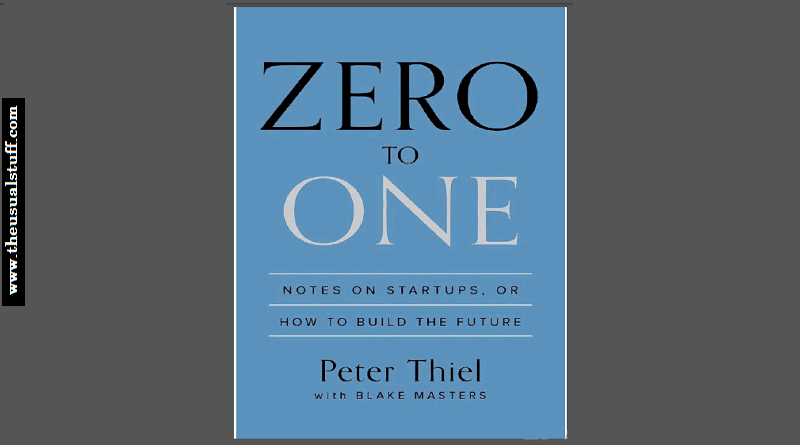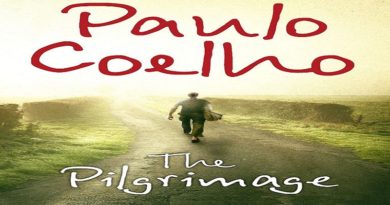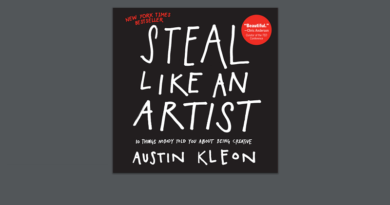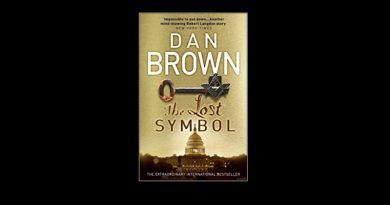Zero To One By Peter Thiel – Review
Zero to One is a self-help book for (wannabee) entrepreneurs written by a renowned name in the tech world, Peter Thiel.
For the tech-savvy who prefer to keep themselves updated with the latest tech news and happenings, (which nowadays is pretty much ubiquitous and part of the modern pop culture) the name, Peter Thiel must not strike as a stranger.
Only one word, PayPal will give you a good hint of who the person is. A billionaire, venture capitalist, co-founder of PayPal and among the initial investors of Facebook, Peter Thiel, along with the 12 other members of his clan, famously known as the “PayPal Mafia” who went on to create generation-defining startups after startups later metamorphosing into million (if not billion) dollar companies.
Also Read: Review of Jeff Kinney’s The Diary of a Wimpy Kid (DOAWK)
Table of Content
About Zero to One
Peter Thiel’s Zero to One or to quote the full name, “Zero to One: Notes on Startups, or How to Build the Future” is a collection and compilation of his lectures that he delivered at the Stanford University.
These lectures were later compiled into a book with the help of one of the attendees, Blake Masters.
The book was published in 2014 which later went on to become the New York Times’ Best Seller.
What Is Zero To One All About?
Simply put and as already mentioned above, Zero to One is a self-help book for entrepreneurs which revolves around how to build a successful startup in today’s age. What challenges does a startup (and later on, an established business) has to face and how the technology plays an underlying role and therefore can be leveraged to up the ante and achieve groundbreaking success.
Zero To One is all about creating a business from the ground zero and then establishing it from there. Thinking radically rather than bringing incremental changes. The focus of the book revolves around innovative ideas and building the business around it. The book starts with the following phrase which sets the entire mood and the direction:
EVERY MOMENT IN BUSINESS happens only once. The next Bill Gates will not build an operating system. The next Larry Page or Sergey Brin won’t make a search engine. And the next Mark Zuckerberg won’t create a social network. If you are copying these guys, you aren’t learning from them.
There are many books in the market which serves as a guide to establish, grow and sustain a successful business but the very essence of Zero to One is innovation and novelty. Constantly sprouting new ideas, exploring the unexplored.
Along the way, Peter also discusses and recounts his encounters with successful entrepreneurs who managed to have a taste of success by exploring new niches. Took the path less traveled and became pioneers in their realm.
In addition to that, Peter also discusses the art of survival and thriving. What a company culture is and how they (The PayPal Mafia) managed to secure success after success and why it does seem like that each member of the so-called mafia has this superpower of turning everything to gold whatever he touches. What is it that they do differently? These are some of the questions that Peter has answered in Zero to One.
Chapter 10 of the book, THE MECHANICS OF MAFIA gives you a glimpse of their work ethics which I consider worth reading.
Also Read: Animal Farm by George Orwell – Review
Peter Thiel and the Ideology of Monopoly
Peter, on many occasions, does not shy to adopt a contrarian approach. Most notable of them is defending the concept of monopoly.
Now, from the libertarian point of view, this may definitely sound like sailing against the wind and therefore, akin to poking a hornet’s nest in today’s world.
Generally, competition is deemed healthy and in the greater interest of the end-user or consumer. However, Peter Thiel considers competition to be the main reason for draining valuable resources.
Although this may sound like stirring the basic tenet of capitalism but Peter never says that capitalism is bad however, he does hold the idea that the capitalism’s very virtues for the consumers are the vices for the businesses. Though the pristine capitalism is beneficial for the consumers, but only at the cost of the businesses.
Peter builds up his case by quoting that how the big guns like Google and Microsoft etc. are able to provide benefits and friendly work environments for their employees owing to the fact that they enjoy monopolies in their respective niches
In the fourth chapter, “The Ideology of Competition”, Peter writes:
CREATIVE MONOPOLY means new products that benefit everybody and sustainable profits for the creator. Competition means no profits for anybody, no meaningful differentiation, and a struggle for survival. So why do people believe that competition is healthy? The answer is that competition is not just an economic concept or a simple inconvenience that individuals and companies must deal with in the marketplace. More than anything else, competition is an ideology—the ideology—that pervades our society and distorts our thinking. We preach competition, internalize its necessity, and enact its commandments; and as a result, we trap ourselves within it—even though the more we compete, the less we gain.
This is not just one instance where Peter advocates for monopoly. He’s been quite vocal on different forums as well. For e.g. a Wall Street Journal’s article quotes Peter claiming that the competition is for the loser. Moreover, at one place, Peter talks in favor of monopoly and encourages entrepreneurs to embrace it.
Some Downsides of the Book
I’m not sure whether this should be classified as a downside of the book, but while I was looking for other people’s reviews about this book, there was one article (which, unfortunately, got lost under the pile of tons of other reviews otherwise, I’d have linked to it) that discusses how basic and to a great extent, needless are the graphs and visualizations in this book.
Now, call it a confirmation bias, after reading this review, I also found the statement to be somewhat true. Though still, I won’t downgrade all of them as substandard. However, I do find them to be pretty basic. It just seems like they were forced by the publisher who happens to hire services of a rookie learning and practicing data visualization (of course, in his spare time). They seem more like for elementary students. For e.g. here’s one graph which illustrates the perception of people about how alike the businesses are whereas, in reality, they are different:

Similarly, there are a couple of other graphical visualization which seem to be forcefully pasted in the book.
Furthermore, I stumbled across an article written by Sebastian Martin where he shares his views on the Good, Bad and the Ugly side of Zero to One. An insightful read I’d say. Quite interestingly, Sebastian also finds the visualizations to be pretty needless. So that makes it 3 of us. An information that Peter can really consider for his next book (if there’s any).
Also Read: Review of Dan Brown’s The Lost Symbol
Is Zero to One Worth Reading?
Over the past few years, many techpreneurs have authored books recalling their experiences, sharing their stories and how they or those mentioned in their books manage to pull success. There’s no shortage of such books in the market which share the same theme.
Zero to One is also one of those books. However, the upper hand this book has over others (in most cases) is that the information is coming from the person who was able to make it on the other side. Been there, done that. And therefore, can speak from his own experience instead of borrowing others and then analyzing them.
So it’s definitely worthwhile learning from his experience. Peter’s startup, PayPal, apart from being innovative, managed to survive the dot-com crash back in 1999. So we can expect that his experiences do hold some life-saving tips for the entrepreneurs who are looking forward to launching in the near future. However, do keep in mind the element of “obsoleteness”. Though the book was published in 2014, but Peter has laid the foundations using his experiences and wit he gained back in 1998. That’s two decades. Many ideas must be out of date in this ever changing IT world but still, I’d say, it’s an insightful read.
Additionally, those who are looking for some dose of inspiration, Zero to One can prove to be a good source for them.
Overall, the book is easy to go through and what it normally is for the books in the same niche, the language is quite simple and easy to grasp and therefore, making it an easy read even for non-native English speaker.
The PDF version that I have comprises only of 160 pages. So if you’re an avid and habitual reader you may “conquer” it in just one sitting.
Overall, Zero to One is a good read and if topics like business, entrepreneurship, IT or Techpreneurs etc. are something that excites you, then you must definitely give this book a chance.
Also Read: The Alchemist by Paulo Cohelo – Review





Pingback: Steal Like an Artist by Austin Kleon - Review - The Usual Stuff